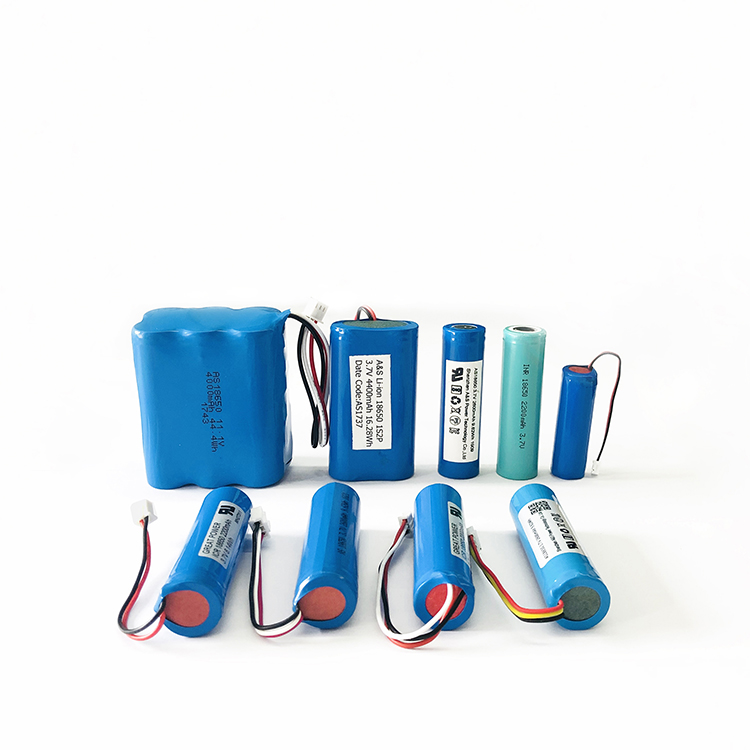Battery
Application
Hot product
Contact us
Taking Lithium-Ion Batteries to the Next Level
2021-06-25
Although the first lithium-ion (Li-ion) battery was conceived more than 50 years ago, the technology continues to be refined and improved today. Scientists and engineers are constantly modifying and testing electrolytes, anodes, and cathodes in an effort to make Li-ion batteries more energy-efficient, cost-effective, and safer.
Chicago, Illinois-based NanoGraf Technologies is one company working to improve the technology. The company has demonstrated a novel high-energy-density silicon-based anode material that has the long-term potential to replace graphite-based anodes in Li-ion batteries. By some estimates, NanoGraf’s formulation may be able to increase the energy density of current Li-ion batteries by 20% to 40%, while also improving the usable life of batteries.
Chip Breitenkamp, vice president of business development with NanoGraf, was a guest on The POWER Podcast and talked about progress being made by the company. He said NanoGraf has been working in collaboration with researchers at Northwestern University and Argonne National Laboratory to develop, optimize, and patent its proprietary technology.
According to NanoGraf, current graphite-based anodes offer a capacity of about 372 milliamp-hours per gram (mAh/g). NanoGraf’s silicon alloy-graphene material architecture can be customized to achieve capacities from 1,000 mAh/g to more than 2,500 mAh/g, delivering higher cell-level energy density and best-in-class rate capabilities for high-discharge applications.
“NanoGraf has been working on [overcoming] the challenges that are associated with silicon for about eight years now,” Breitenkamp said. “Those challenges are: as lithium is taken into silicon particles during charge and discharge cycles of the battery, it swells, it cracks, and it sort of falls apart. And what the co-founders of NanoGraf [Cary Hayner and Josh Lau] have been working on is a way to utilize graphene and other coating treatments to allow those particles to swell and contract, but hold them together. Graphene is a huge part of that.”
Breitenkamp said some competitors rely on vapor deposition-based systems in their manufacturing processes, but NanoGraf utilizes a wet-chemistry process that is highly scalable, cheaper, and less complex. The company has already proven the process at a pilot manufacturing line in Japan, where it is producing at a 10-ton scale. Breitenkamp said the company expects to ramp that up in the near future.
“We can get to cost-parity with graphite at only a 500-ton scale, which is where we’re getting to very soon. Once we get to that thousand-ton scale, we actually become cheaper than graphite on a kilowatt-hour basis,” said Breitenkamp.


Chicago, Illinois-based NanoGraf Technologies is one company working to improve the technology. The company has demonstrated a novel high-energy-density silicon-based anode material that has the long-term potential to replace graphite-based anodes in Li-ion batteries. By some estimates, NanoGraf’s formulation may be able to increase the energy density of current Li-ion batteries by 20% to 40%, while also improving the usable life of batteries.
Chip Breitenkamp, vice president of business development with NanoGraf, was a guest on The POWER Podcast and talked about progress being made by the company. He said NanoGraf has been working in collaboration with researchers at Northwestern University and Argonne National Laboratory to develop, optimize, and patent its proprietary technology.
According to NanoGraf, current graphite-based anodes offer a capacity of about 372 milliamp-hours per gram (mAh/g). NanoGraf’s silicon alloy-graphene material architecture can be customized to achieve capacities from 1,000 mAh/g to more than 2,500 mAh/g, delivering higher cell-level energy density and best-in-class rate capabilities for high-discharge applications.
“NanoGraf has been working on [overcoming] the challenges that are associated with silicon for about eight years now,” Breitenkamp said. “Those challenges are: as lithium is taken into silicon particles during charge and discharge cycles of the battery, it swells, it cracks, and it sort of falls apart. And what the co-founders of NanoGraf [Cary Hayner and Josh Lau] have been working on is a way to utilize graphene and other coating treatments to allow those particles to swell and contract, but hold them together. Graphene is a huge part of that.”
Breitenkamp said some competitors rely on vapor deposition-based systems in their manufacturing processes, but NanoGraf utilizes a wet-chemistry process that is highly scalable, cheaper, and less complex. The company has already proven the process at a pilot manufacturing line in Japan, where it is producing at a 10-ton scale. Breitenkamp said the company expects to ramp that up in the near future.
“We can get to cost-parity with graphite at only a 500-ton scale, which is where we’re getting to very soon. Once we get to that thousand-ton scale, we actually become cheaper than graphite on a kilowatt-hour basis,” said Breitenkamp.













